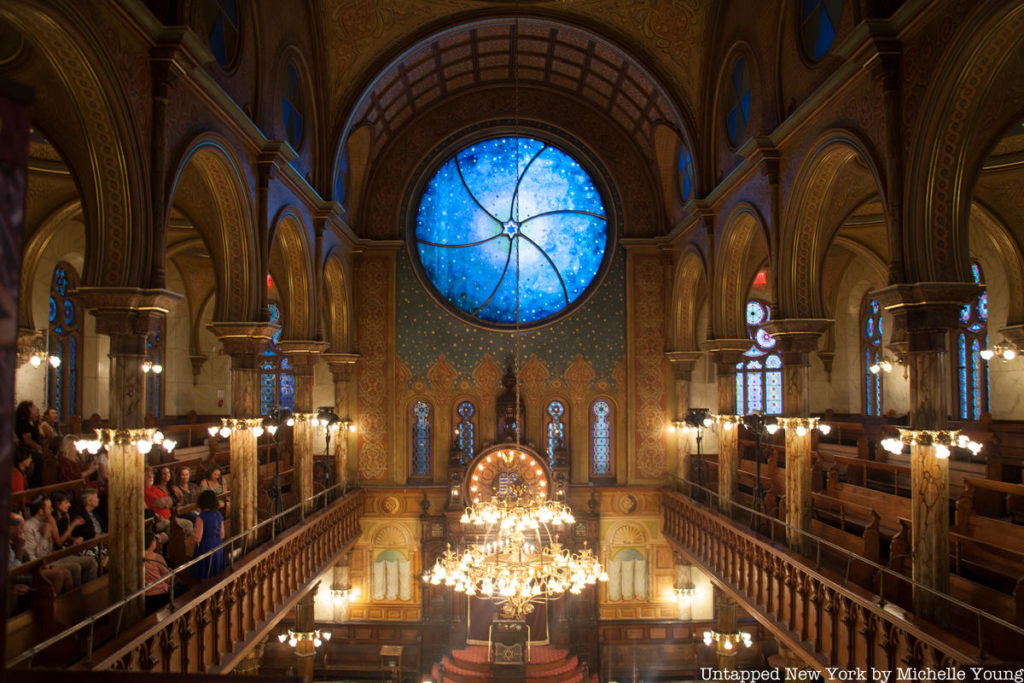3. Eldridge Street Synagogue

Once the most densely populated district in the world, the Lower East Side of Manhattan is almost unrecognizable from its bustling days a century ago. However, one site that has (somewhat) remained is the Eldridge Street Synagogue, which was built in 1887 as the first great house of worship by Eastern European Jews in the United States. Designed by German Catholic architects Peter and Francis Herter, the synagogue embodied the promise of religious freedom and the formation of Jewish-American identity.
For decades, the synagogue thrived. But many Jewish families began to move away from the Lower East Side in the 1920s, with new immigration restrictions preventing many families already here from reconnecting with loved ones. Post-World War II, the congregation closed its main sanctuary and met instead in the basement, leaving the main floor essentially abandoned. After decades, the dust inside was so thick you could write in it, and cobwebs hung between the pillars. There was extensive water damage to the dome, with water pouring in from the openings. Pigeons had even taken roost in the balcony. In 1987, the Eldridge Street Project was formed to restore the synagogue to its former grandeur. Twenty years and $20 million later, the building reopened as the Museum at Eldridge Steet.
Artist Kiki Smith and architect Deborah Gans designed a rose window made of 1,200 individually shaped pieces of colored glass, etched with more than 650 stars. The ark and bimah, the sacred areas of the synagogue, are made of fine walnut. Every part of the restoration was painted by hand — although many components of the synagogue were painted to look real but are not, such as trompe l’oeils on either side of the ark that show a traditional curtain over the ark doors. There’s also a hidden heart on the ceiling instead of a spade, which was “perhaps put there by a romantic artisan” according to the Museum. Additionally, there remains a historic wall deliberately left bare along the left balcony of the upstairs sanctuary.





